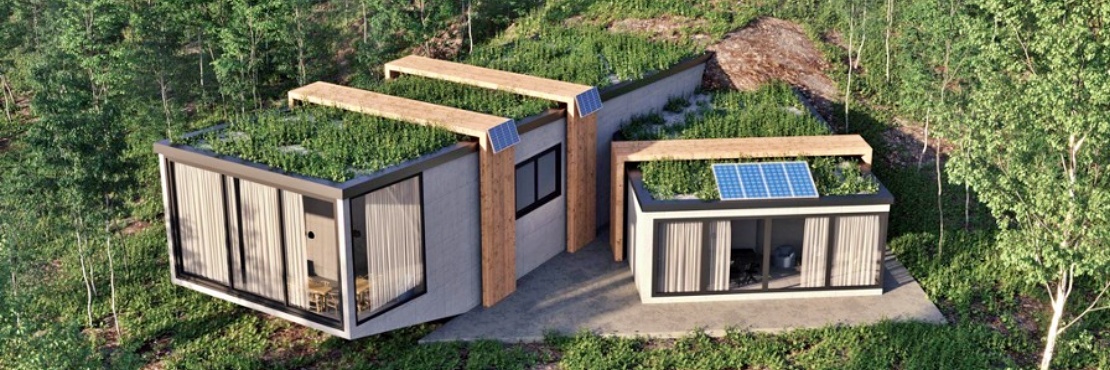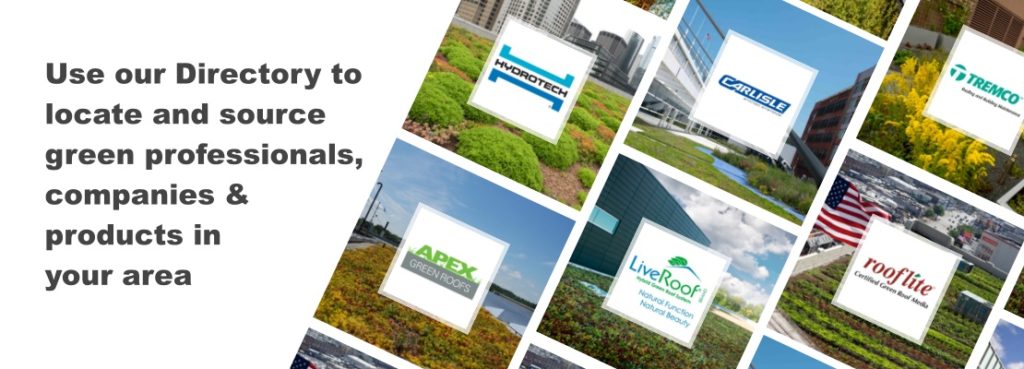Source: iStock – Credit Eoneren
Promoted by GreenMatch
Eco-friendly building design combines innovative solutions, like heat pumps and green roofs, to pave the way for a greener future. Today, we’re discussing how heat pumps and green roofs can combine to evolve properties and provide the foundation for more environmentally friendly buildings in the future.
Peter von Rittinger invented the first heat pump system between 1855 and 1857, while green roofs in their modern form weren’t invented until the 1960s. Combining the two isn’t yet a common practice, but it has enormous potential. Before we dive into the specifics of synchronizing eco-friendly design, let’s briefly discuss how an air to air heat pump works.
How do Air to Air Heat Pumps Work?
Air to air heat pumps take hot air from one location to another. They’re an innovative way to both heat and cool various public and private buildings. The process of heating and cooling with air-to-air heat pumps is deceptively simple. Let’s sum it up in eight steps:
- The outdoor unit. An outdoor unit uses fans to extract heat from the external air. It then blows the hot air over a heat exchanger coil.
- Transference. The heat from outside transfers to a cold coolant flowing through the heat exchanger coil. Because of the coolant’s low boiling temperature, it quickly becomes a slightly warm vapor.
- Vapor. The warm vapor in the coolant coil passes through a compressor, increasing its temperature and compressing its density.
- The indoor unit. The coolant – now a hot, dense vapor – travels through internal piping systems to your home’s indoor unit(s).
- Fans. The units inside your house use fans to blow the heat from the coolant into the room(s), effectively heating the area.
- Coolant. After the heat has been blown out of the coolant, it returns to its original liquid form.
- Expansion. The liquid coolant goes through the expansion valve, forcing it to release its heat and mix with the ambient air, creating a liquid/vapor combination.
- Return. The cold coolant, now in a liquid vapor form, circulates back to the outdoor unit, ready to be heated again.
Possibly the most significant part of this process is the fact it’s completely reversible. When you need to cool the area in the summer, switch the mode of the air-to-air heat pump system. In the cooling mode, the internal heat pump units extract heat from the ambient indoor air and pump it outside, maintaining a consistent, cool temperature indoors.
What are the Benefits of Air-to-Air Heat Pumps?
Besides being versatile and straightforward to use, there are many reasons to invest in an air-to-air heat pump system for projects like homes and businesses. Let’s dive in:
Environmental Impact
Air-to-air heat pumps are an environmentally friendly way to heat and cool a building, releasing little to no emissions. Installing a heat pump could reduce a household’s carbon footprint – potentially by as much as 15 to 228 tons.
Furthermore, the American Council for an Energy-Efficient Economy (ACEEE) recently released a study stating that buildings could reduce their total greenhouse gas emissions by 44% by replacing gas-burning heat systems with heat pumps.
Energy Efficiency
An air-to-air heat pump system generates heating and cooling effectively and efficiently, meaning they maintain a stable temperature easily. Their high efficiency means air to air heat pumps have a seasonal efficiency rating approaching 3.0-4.0, meaning they generate 3 to 4 kW of heat for every 1kW of electricity.
The energy efficiency of heat pumps makes them ideal for properties like academic institutes and apartment complexes. Many US states, like New York, have initiatives, like the Strategic Energy Management Program, to incentivize the use of heat pumps in large buildings.
Reduce Bills
Improving our environments is essential to creating a sustainable world. Finding new ways to utilize multiple green building design factors together helps us envision a superior practice for homes, businesses, and public buildings.
Using an air-to-air heat pump for heating and cooling reduces bills more than traditional heating methods. In the US, homeowners with heat pumps installed can save an average of $500 per year on their energy bills.
Rising energy prices mean relying on electrified heating systems is an attractive option for residential and business purposes. Air-to-air heat pumps can outright reduce electricity use by 50% compared to baseboard heaters or furnaces, further reducing property bills.
Low Installation Costs
Some heating methods require expensive installations, but air-to-air heat pumps have relatively low upfront costs compared to thermal source pumps. Various government incentives worldwide encourage home and business owners to install heat pumps.
For example, US citizens can expect up to a 30% federal tax credit on the cost of buying and installing an air to air heat pump. In the UK, many are eligible for £5,000 heat pump grants through their Boiler Upgrade Scheme. There’s also the New York Clean Heating and Cooling Communities Campaign that aims to increase the number of businesses using clean heating systems like heat pumps.
Can Green Roofs Improve Air to Air Heat Pumps?
Having a green roof can definitely improve the function of air to air heat pumps. Living roofs keep buildings cooler in the summer and warmer in the winter because of their excellent natural insulation. Combining the systems means the heat pump is needed less often.
The National Library of Medicine concluded that heat pumps are better for urban air quality than fossil-fuel based heating. Heat pumps improve air quality through their filtered air systems. They combine perfectly with green roofs, filtering out pollutants and allergens in urban areas to create greener, cleaner cities.
Green roofs can reduce heat flux from roofs to buildings by up to 72%. Cities are usually hotter than rural areas, creating heat islands that lead to increased illness, air pollution, and energy consumption. Using green roofs and heat pumps together makes it easier for private and public buildings to keep urban areas cooler without excessive energy consumption.
Improving our environments is essential to creating a sustainable world. Finding new ways to utilize multiple green building design factors together helps us envision a superior practice for homes, businesses, and public buildings. Search for projects in your area if you want to get involved in designing and creating a better future.
 Greenroofs.comConnecting the Planet + Living Architecture
Greenroofs.comConnecting the Planet + Living Architecture






